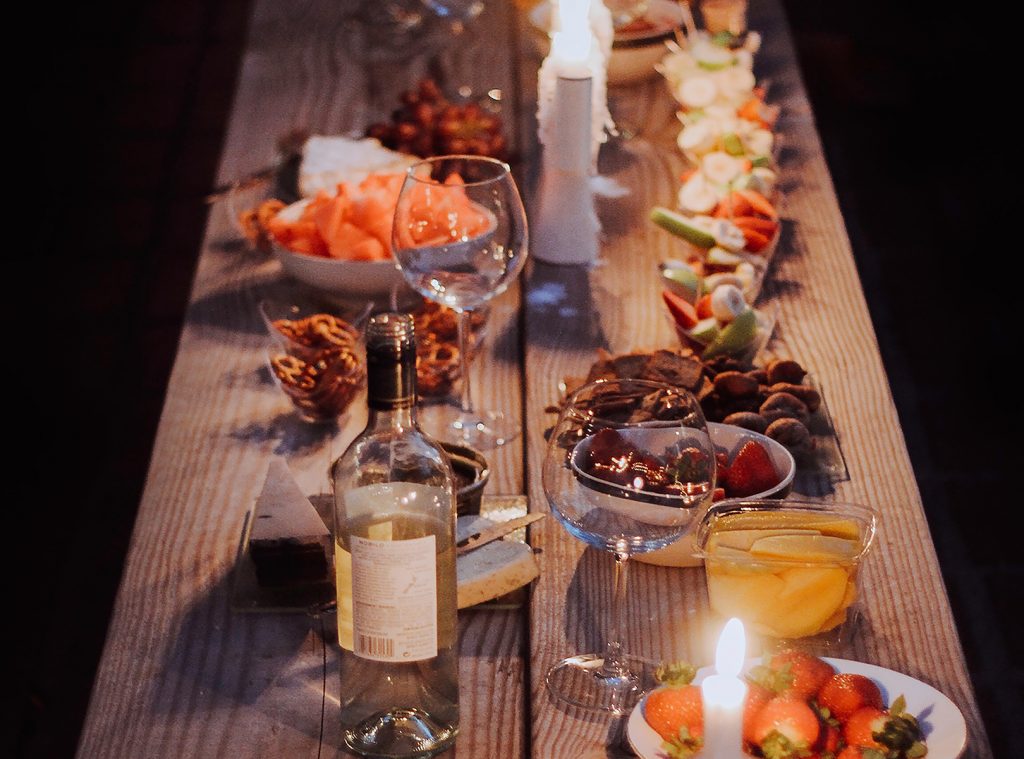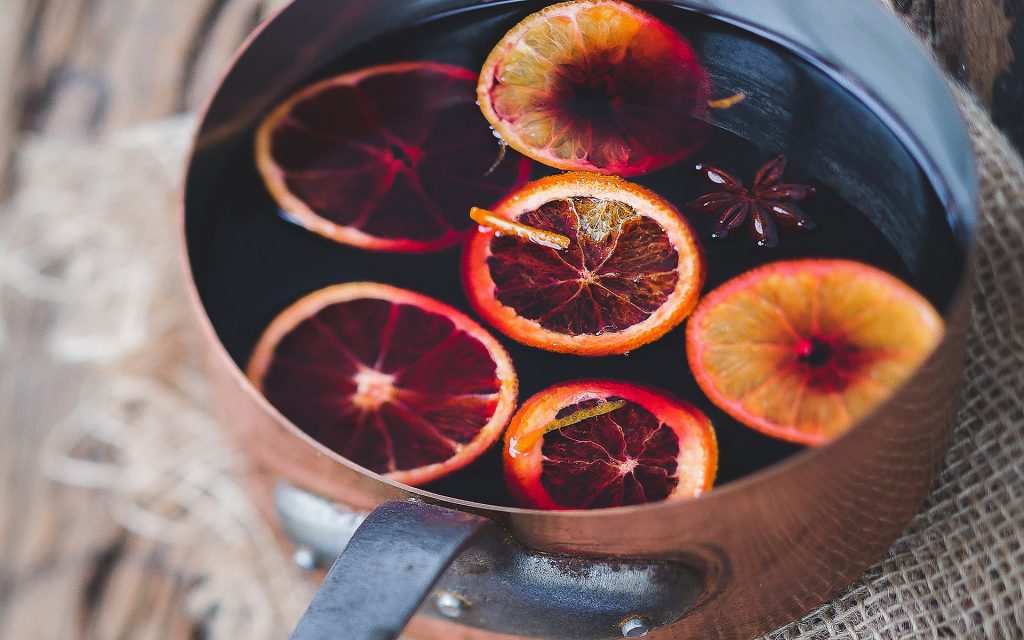When people think of an historical Christmas, they typically think of the Victorian Christmas that they have seen in Charles Dickens’ A Christmas Carol. However, the Regency period was earlier between 1800-1820, which was part of the larger Georgian era from 1714 to 1830. The Victorian era followed after that between 1830-1901. As a result, there were a few traditions that were not yet part of the Christmas holiday.
The Christmas celebrations typically began around advent, known as the fourth Sunday before Christmas Eve. Some would decorate as early as advent, while others might wait, even as late as Christmas Eve. The length at which they kept their decorations up could vary as well. Some would keep them up throughout Christmastide, the twelve days of Christmas, from December 25th through January 6th. Others kept their decorations up through Candlemas, February 2nd, the Feast of Presentation of Jesus Christ.
The Christmas Regency Feast

Christmas dinner was typically around 4 PM, but could vary from family to family and by region. As the evening progressed a Christmas toast was given to the season and gifts were given out, usually this was when servants also received their gifts and children would sing Christmas carols for entertainment.
The first course for dinner would often be turtle soup or a white soup that was thick and creamy. Gravy soup could have ham or beef with a variety of onions and carrots and herbs. Fish was often served such as brile, gudgeons, crouch, perch, along with other seafood favorites like scallops and wilks, periwinkles, cockles, mussels, bearbet or hollebet.
The main course typically included choices between roast beef, venison, mutton, goose, pheasant, or peacock. They typically created a stuffing for the fowl. Most households could only afford goose until the turkey was later introduced by Queen Victoria in the mid 1800’s. Side items included potatoes, squash, brussels sprouts and carrots.
Since water was unsafe to drink, they usually had wine with their meal. (I haven’t found a source that indicated what the children drank.) Often, bakers cooked the meat for those households that contained small ovens. Many would pick up their food on the way home from church.

For dessert there was Mince pie and Christmas pie. Recipes varied by region, but typical ingredients included beef, sugar, raisins, lemons, spices, orange peel, goose, tongue, fowls, eggs, apples and brandy. The pies were eaten each day for 12 days before Christmas to ensure good luck for the next 12 months of the new year. Talk about a chance to gain weight over the holidays!
Another dessert was Christmas pudding, a mixture of 13 ingredients (representing Christ and the twelve apostles) which was boiled in a pudding cloth. Ingredients included suet, brown sugar, raisins, currants, citron, lemon and orange peels, spices, crumbs, flour, eggs, milk and brandy. Other desserts included Gingerbread and butter shortbread. Children enjoyed sugar plums and ginger nuts.
Christmas Carols
Caroling dates back to the middle ages. Songs such as: Here We Come a Wassailing, The Twelve Days of Christmas, The First Noel, Good Christian Men Rejoice and Greensleeves are all traditional carols from the Middle Ages. Caroling in the form of going from door to door had died out with the end of the feudal system in England and didn’t revive again until the Victorian period. In Jane Austen’s Regency era, family and friends typically spread good cheer in the comfort of their homes among gathered friends and family or at balls, dinners, small parties, and churches.
O Come All Ye Faithful was first published in 1760, but not translated into English until 1841.
Joy to the World was first published by Isaac Watts’ 1719 hymnal, The Psalms of David, but the modern version wasn’t written until 1836.
Hark the Harold Angels Sing was first written in 1739 by Charles Wesley, amended in 1753 by George Whitfield, but the modern version of today wasn’t written until 1840 by Mendohlsson.
Silent Night was written in 1816 by Joseph Mohr, but wasn’t translated into English until 1863.

Christmas Trees & Decorations
Typically, Christmas trees didn’t exist as they do now and did in the Victorian period. If a family did have a tree, it was a table top tree and quite plain. Decorations were live greenery with berries, including mistletoe, holly, ivy, rosemary, evergreen, hawthorn, laurel, box and firs. They burned the yule log as a tradition. It was HUGE and picked out and dried out from the year before. It wasn’t brought in until Christmas Eve and hoped to burn through the night and all through Christmas day. They didn’t exchange Christmas cards or multiple, elaborate gifts. If they did exchange gifts, it was usually one special hand-made item.